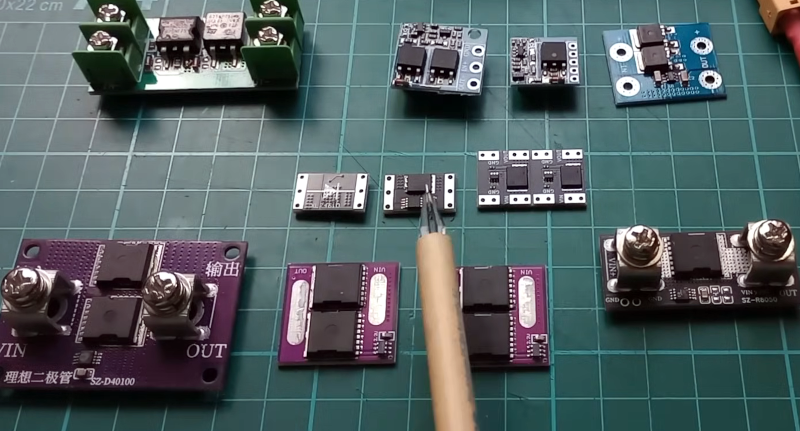
[Julian] knows that real diodes you can buy don’t work exactly like we say they do. That’s actually pretty common. We routinely ignore things like wire resistance and source resistance in batteries. Diodes have problems that are harder to ignore, such as the forward voltage drop. So, while a real diode will only pass current in one direction, it will also drop some of the voltage. [Julian] shows you how you can get simulated ideal diodes and why you might want them in a recent video you can see below.
The video starts with a simple demonstration and enumerates some of the practical limitations. Then, he pulls out some ideal diode modules. These typically don’t solve every problem, so they aren’t really ideal in the theoretical sense. But they typically appear to have no forward voltage drop.
The devices use MOSFETs that turn on to have a low resistance when biased forward. Even then, you’ll have some voltage drop, but it can be made extremely small compared to a real diode.
If you don’t need to handle power, it is fairly easy to couple a diode and an op amp to get similar behavior. But where you really want to minimize voltage drop is in power applications, so these modules use beefy FETs.
Some of the modules can float and handle high voltages. Others require a ground reference and will thus have difficulties with higher voltages. The control electronics differ significantly depending on the type of MOSFET used, and [Julian] covers that in detail in the video.
You might want to check out one of our favorite videos on non-ideal diodes. We are guessing that DIY diodes will be far from ideal.
No comments:
Post a Comment